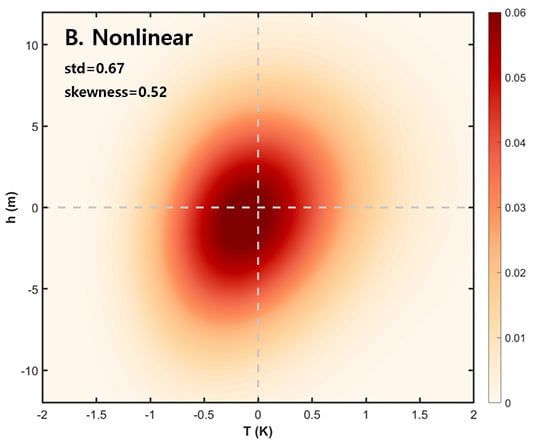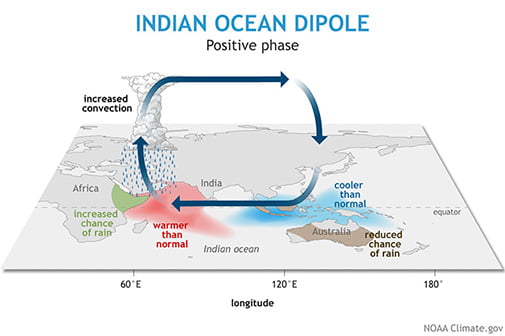TROPICS
El-Nino Southern Oscillation(ENSO)
The El Nino-Southern Oscillation (ENSO) isn’t a linear system but a nonlinear system.
Linear properties such as amplitude, frequency can be explained by simple linear recharge oscillator model (Linear ROM). However, nonlinear properties such as
skewness, transition asymmetry cannot be explained at all. Here, we developed nonlinear ROM which includes nonlinear dynamical heating process (NDH) known
as driver of amplitude asymmetry of ENSO. Using a Fokker-Planck Equation (FPE), we directly calculated probability function of a nonlinear and linear ROMs.
The results clearly show that nonlinear ROM has following properties : 1. skewed probability distribution 2. warm/cold duration asymmetry 3. linear properties are
(amplitude, frequency) preserved.
To examine how nonlinear ROM portrays nonlinear characteristics well in practical sense, we assessed nonlinear properties of ENSO in CMIP5 models through
nonlinear ROM. Nonlinear parameters in ROM which indicate strength of nonlinear dynamical heating (NDH) is estimated by simple empirical method.
High correlation (r=0.8) between model skewness and nonlinear ROM’s skewness which is calculated by estimated parameters reveals that nonlinear ROM is
powerful tool for assessing nonlinear features of ENSO. Furthermore, we expect that nonlinear ROM provides insight for physical origin of intermodel-diversity in
ENSO skewness among CMIP5 Models.
(An et al., 2020)



